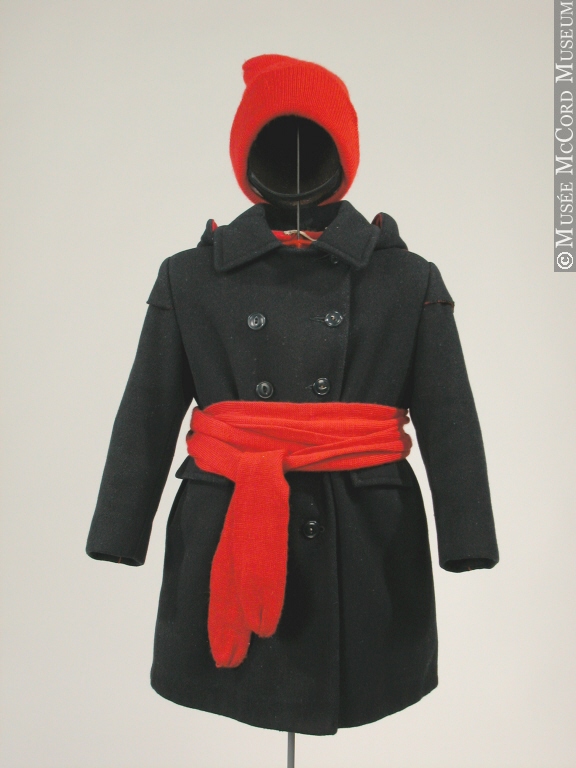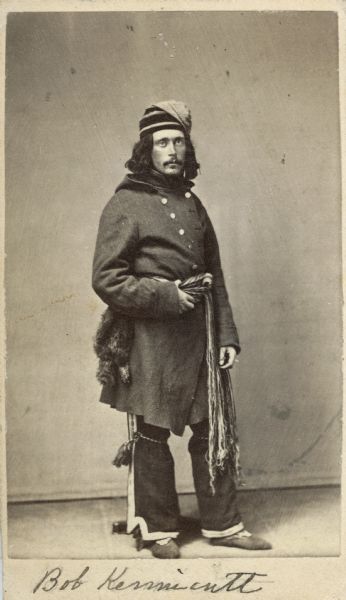The Red River Coat
 Red River Coat, Markette Inc. 1940-1950, 20th century. Wool. © McCord Museum M2000.49.1Two directions from yesterday’s post about the Red River Coat: one is the embroidered hide coat of elegant ‘european’ (as described by the museums) form, the other is an early to mid-twentieth century garment (above), mostly for children in Ontario and Quebec, called the Red River coat: something like a pea jacket, lined in red and tied with a red sash that could also be used as a muffler – a manufactured version of the 20cm wide, 3m long Métis sash, an all-purpose finger-woven band used to hold blanket capotes closed; wrapped around the middle they strengthened voyageur’s backs; they were wide enough to carry things in, to use as tourniquets, towels and tumplines. (The links in this post take one to a most diverse collection of webpages, from Leonard Cohen circa 1945 to Paul Kane's painting of John Lefroy in 1845)
Red River Coat, Markette Inc. 1940-1950, 20th century. Wool. © McCord Museum M2000.49.1Two directions from yesterday’s post about the Red River Coat: one is the embroidered hide coat of elegant ‘european’ (as described by the museums) form, the other is an early to mid-twentieth century garment (above), mostly for children in Ontario and Quebec, called the Red River coat: something like a pea jacket, lined in red and tied with a red sash that could also be used as a muffler – a manufactured version of the 20cm wide, 3m long Métis sash, an all-purpose finger-woven band used to hold blanket capotes closed; wrapped around the middle they strengthened voyageur’s backs; they were wide enough to carry things in, to use as tourniquets, towels and tumplines. (The links in this post take one to a most diverse collection of webpages, from Leonard Cohen circa 1945 to Paul Kane's painting of John Lefroy in 1845)
below: this is Robert Kennicott in 1862 visiting Portage La Loche. He was an American naturalist, clearly gone native, as they say: his coat is plain wool, the sash is magnificent, his toque striped, his trousers tied and tasselled, his moccassins no doubt beautiful.
 Robert Kennicott, visiting card, 1872We have this documentation because Kennicott had himself photographed in his full costume grand nord – he must have been delighted with it. The web page from Portage La Loche that this photograph comes from is dense with interesting research on the Métis sash – beautiful images from paintings to photos.
Robert Kennicott, visiting card, 1872We have this documentation because Kennicott had himself photographed in his full costume grand nord – he must have been delighted with it. The web page from Portage La Loche that this photograph comes from is dense with interesting research on the Métis sash – beautiful images from paintings to photos.
How the blanketty Red River coat became a navy wool coat for wealthy little Montreal children in the 1940s might indicate something of the transformation of complex cultural and environmental garments into something cute, something that children are allowed to wear because they are small and defenceless: they can undermine the power and cultural meanings of, for example, the peoples represented by Louis Riel, still a divisive political figure in Canada, 130 years after his death.
